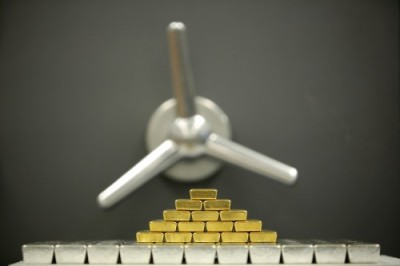China’s Gold Strategy: Beijing’s 30,000 Tons of Gold Reserves?

My attention has just been drawn to a note put out by a very well respected analyst and China follower which postulates that China could actually be holding as much as 30,000 tonnes of gold in various government accounts and that within the next three years the nation will link the yuan to gold. The nation’s official holding is only 1,054.6 tonnes as reported to the IMF, but there is widespread belief that it has been accumulating additional gold over the past several years, perhaps to the tune of around 5,000 tonnes while holding this in separate non-reportable (as China considers them) accounts.
But, of course, this does not include previously high volumes of gold which may also have been bought, and stored, in the past, and again never reported as official holdings.
So what are China’s real gold holdings? The 30,000 tonne figure has come from Simon Hunt of Simon Hunt Strategic Services (Hunt was the Hunt in Brook Hunt, one of the world’s top metals analytical teams now absorbed into Wood Mackenzie) in his latest ‘Thought for the Day’ letter to his clients in which he comments that
“China has much more gold than it is allowing the world to see. As Alasdair Macleod, probably the world’s number one analyst of the gold market, wrote that between 1983 and 2002 China probably accumulated 25,000 tons of gold. Thus, its current gold holdings are probably north of 30,000 tons in contrast to the USA which has either sold or leased most of its gold.”
Now this statement coming from one of the usual gold megabulls might be ignorable, but Hunt does not fall into this category and has a good track record of insights into China’s strategic initiatives as far as metals and minerals are concerned.
Here is a link to Macleod’s original article on this matter – China’s gold strategy – showing how he arrives at his conclusions – and then another link to a subsequent article from Bill Holter, who can admittedly be sometimes a bit ‘off the wall’ in his comments and analyses, supporting Macleod’s assessment and adding further theory as to how and why this might have been achieved. See: China’s Massive Holdings of Gold Bullion. Is the West Financially Bankrupt?
There is also some anecdotal evidence to support some massive gold storage vaults in China containing unreported gold, but then a vault visitor presented with a store of gold bars would have little or no idea of how much is really there.
Hunt notes the following summary points, among others in his ‘Thought for the day’:
- China will take strong action in the second half of this year to restructure its financial system, its heavy industry, manufacturing and real estate sectors. It will be what we call a period of ‘’controlled crisis’’ that will not only shock most foreigners but will have global reverberations.
- China does not want its currency to be the global reserve currency but to be an accepted unit for the settlement of trade and for central banks and others to retain in their portfolios.
- China does not trust Washington’s ability to manage the sole reserve currency unit in the interests of the rest of the world, only in its own interests. Historically, America has used the inflation route to reduce its debts to the rest of the world. In contrast, China is likely to link the Yuan to gold within three years. Before then government must have its economy seen to have been restructured and stable even though the process will be painful.
There has been much talk in the media of ‘currency wars’ and Hunt reckons that China’s strategising recognises this and feels that a stable yuan (linked to gold) is key to any future global power plays to dominate the global financial order – although as Hunt also comments it doesn’t feel the need to set the yuan up specifically as a global reserve currency. Indeed it may well work in conjunction with Russia, which has recently been raising its own gold holdings, and perhaps some of the other BRICS, to offer a gold backed alternative to the dollar as others have suggested.
Some yuan internationalisation is already in hand with, so far, swap agreements having been set up with around 28 countries and the establishment of a yuan trading centre in Zurich through which yuan payments may be facilitated.
If China does have 30,000 tonnes of gold then gold backing for its currency is certainly within the bounds of credibility, but even if not, the amount of gold known to be flowing in to the country – and its likely accumulation of unreported gold reserves by the Central Bank – would place it in a strong position in any future world financial realignment anyway. But 30,000 tonnes is a huge amount to have bought in – although given its massive trade surpluses, and a need to diversify its holdings away from the dollar, is not impossible. The suggestion that the nation holds this amount of gold has to be considered highly speculative, but over the years one should have learnt that China plans strategically very far ahead – one of the benefits of a controlled economy – and plays its cards very close to its chest, so one can’t just laugh the idea off as fantasy.

